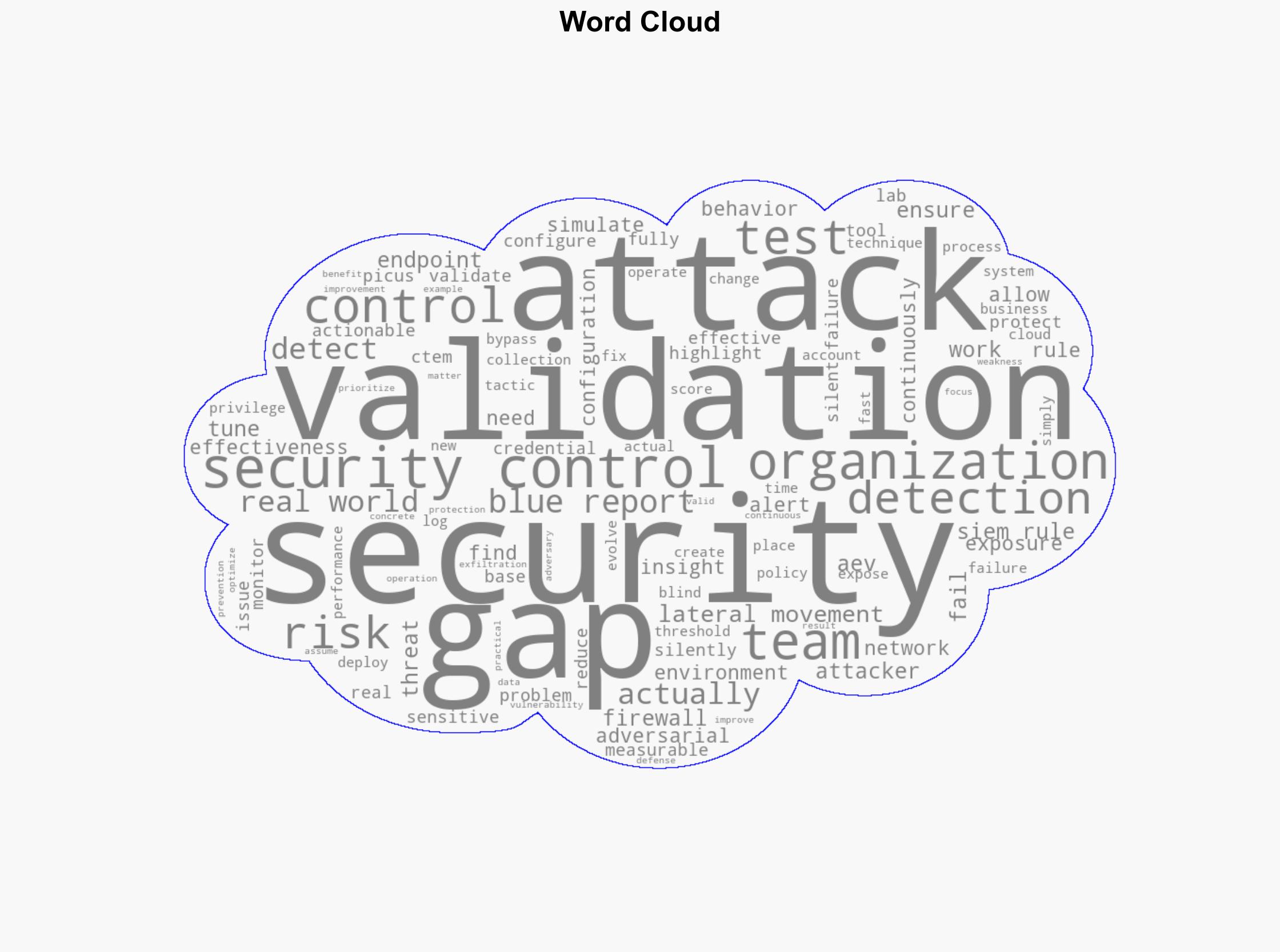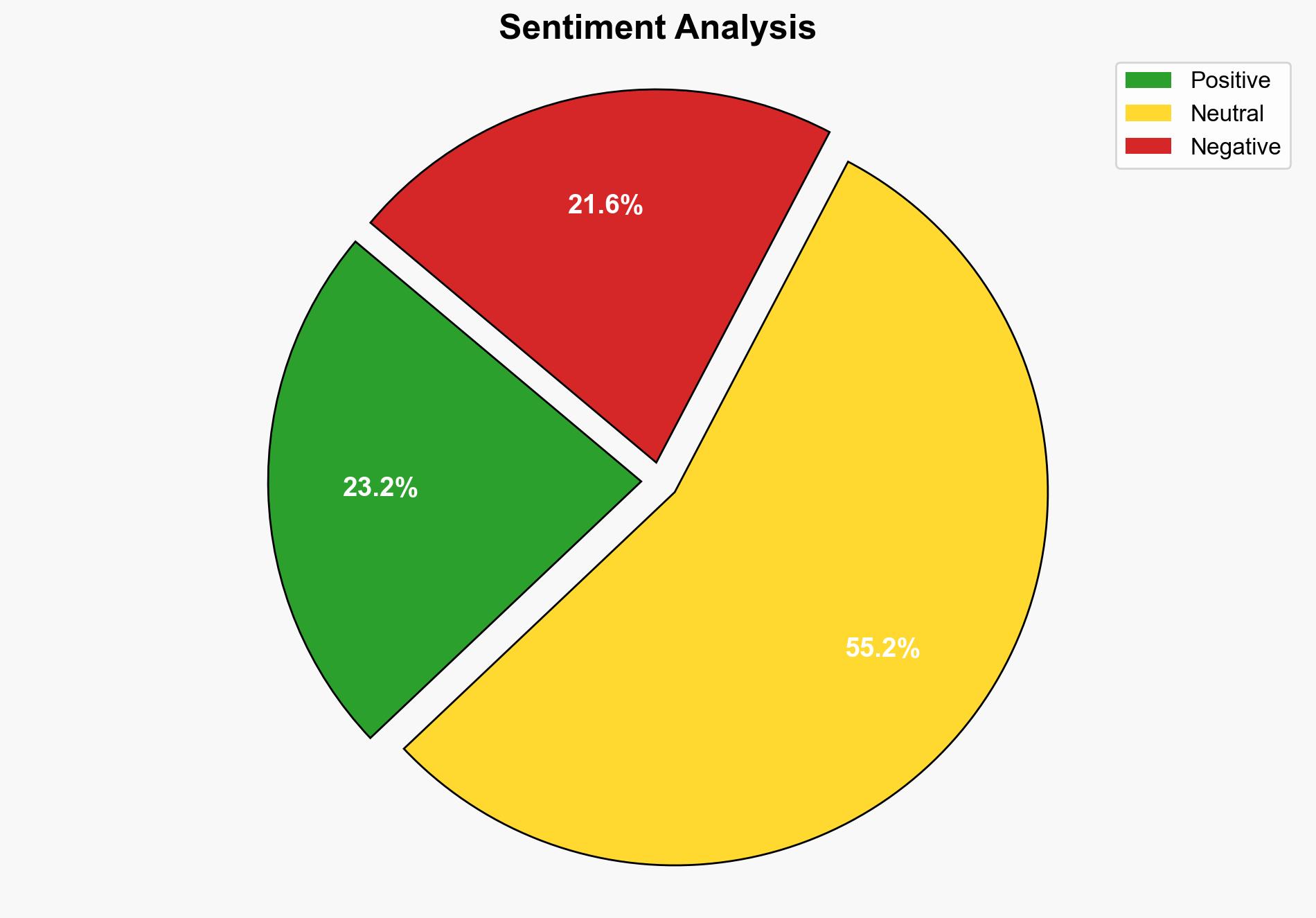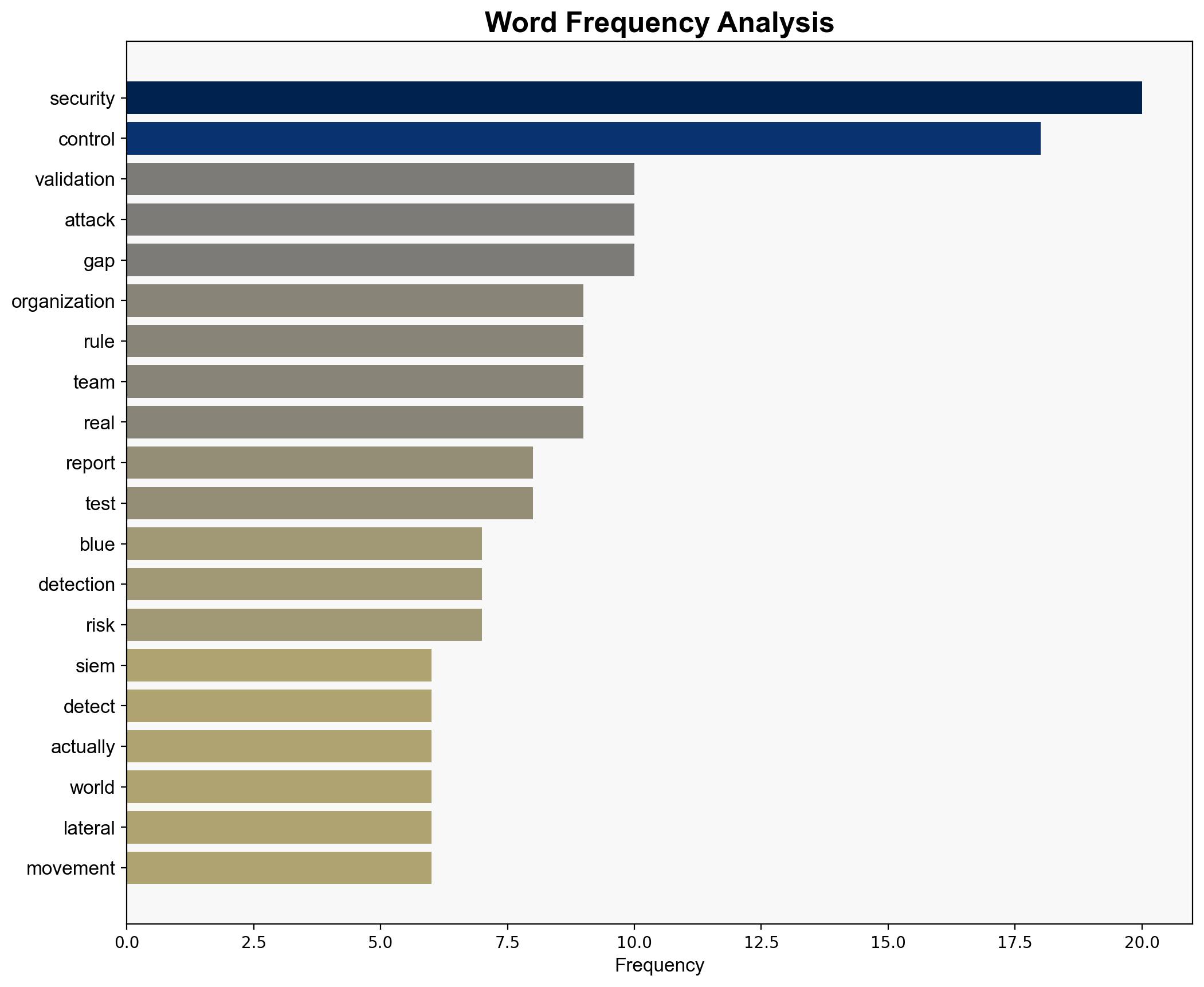Fixing silent failures in security controls with adversarial exposure validation – Help Net Security
Published on: 2025-09-10
Intelligence Report: Fixing Silent Failures in Security Controls with Adversarial Exposure Validation – Help Net Security
1. BLUF (Bottom Line Up Front)
The most supported hypothesis is that adversarial exposure validation (AEV) is essential for identifying and rectifying silent failures in security controls, which are often undetected due to configuration drift and evolving threats. Confidence Level: High. Recommended action is to implement continuous AEV to ensure security controls are effective against real-world attacks.
2. Competing Hypotheses
Hypothesis 1: Silent failures in security controls are primarily due to configuration drift and lack of continuous validation, making AEV crucial for maintaining security effectiveness.
Hypothesis 2: Silent failures are inevitable due to the rapid evolution of threats and inherent limitations in current security technologies, suggesting that AEV alone may not be sufficient without broader systemic changes.
Using ACH 2.0, Hypothesis 1 is better supported as it directly addresses the identified gaps in security through proactive testing and adjustment, whereas Hypothesis 2 lacks direct evidence of systemic limitations beyond current technological capabilities.
3. Key Assumptions and Red Flags
Assumptions:
– Security controls can be effectively tuned through AEV.
– Organizations have the resources to implement continuous testing.
Red Flags:
– Over-reliance on AEV may overlook the need for broader security architecture improvements.
– Potential underestimation of the speed at which threats evolve.
4. Implications and Strategic Risks
Failure to address silent failures could lead to significant data breaches, financial losses, and reputational damage. The cascading effect of undetected vulnerabilities could escalate into widespread network compromises. Economically, this may increase costs due to reactive measures and potential regulatory fines. Psychologically, it may erode trust in organizational security measures.
5. Recommendations and Outlook
- Implement AEV as a standard practice to continuously test and adjust security controls.
- Invest in training for security teams to recognize and adapt to evolving threats.
- Scenario Projections:
- Best Case: AEV implementation leads to a significant reduction in undetected breaches.
- Worst Case: AEV fails to keep pace with threat evolution, leading to major security incidents.
- Most Likely: AEV improves detection rates, but requires ongoing adjustments to remain effective.
6. Key Individuals and Entities
– Picus Security: Highlighted in the report for their findings on security control failures.
7. Thematic Tags
national security threats, cybersecurity, counter-terrorism, regional focus





